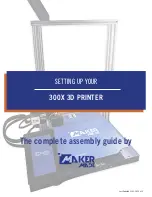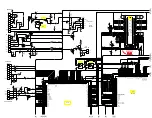
4-8
Summary of Product
Samsung Electronics
Service Manual
4.2.6 Fuser
There are two methods of fusing toner onto the paper: the existing heat lamp process and the Q-PID process
developed by Samsung. ML2250 export models, both 110V and 220V, use the heat lamp process.
This consists of a heat lamp, heat roller, pressure roller, thermistor and thermostat. By use of heat and pressure
toner is caused to melt and adhere to the paper surface in order to complete the printing process.
4.2.6.1 Thermistor and Thermostat
The thermistor is used to detect the temperature of the heating unit and feeds this information into the main
processor
If the heat lamp becomes too hot the Thermostat cuts off the power to the lamp in order to prevent over-heating
and any potential fire hazard is removed.
4.2.6.2 Heat roller
The heat roller transfers the heat from the heat lamp to the paper. The surface of the heat roller is coated with
Teflon so that toner does not stick to the surface.
4.2.6.3 Pressure roller
A pressure roller mounted under the heat roller is made of a silicon resin and the surface is also coated with
Teflon. When a paper passes between the heat roller and the pressure roller the toner powder is meted and
adheres to the surface of the paper permanently.
4.2.6.4 Safety features
To prevent overheating
- 1st protection device: Hardware cuts off when overheated
- 2nd protection device: Software cuts off when overheated
- 3rd protection device: Thermostat cuts off mains power to the lamp.
Safety device
- Fuser power is cut off when the front cover is opened
- LSU power is cut off when the front cover is opened
- The temperature of the fuser cover's surface is maintained at less than 80ºC to protect the user and a caution
label is attached where the customer can see it easily when the rear cover is opened.
4.2.7 LSU (Laser Scanner Unit)
This is the core of the laser printer. It converts the video data received from the computer into an electrostatic
latent image on the surface of the OPC drum. This is achieved by controlling the laser beam and exposing the
surface of the OPC drum to the laser light. A rotating polygon mirror reflects the laser light onto the OPC and each
side of the mirror is one scan line. The OPC drum turns as the paper feeds to scan the image down the page.
The /HSYNC signal is created when the laser beam from LSU reaches the end of the polygon mirror and this
signal is sent to the controller. The controller detects the /HSYNC signal to adjust the vertical line of the image on
paper. In other words after the /HSYNC signal is detected the image data is sent to the LSU to adjust the left
margin on the paper.




































